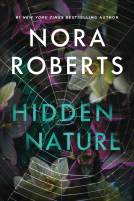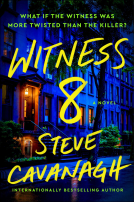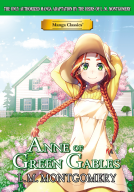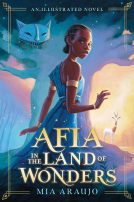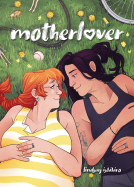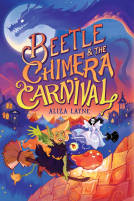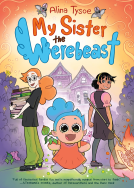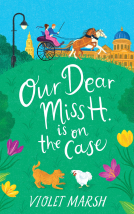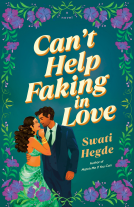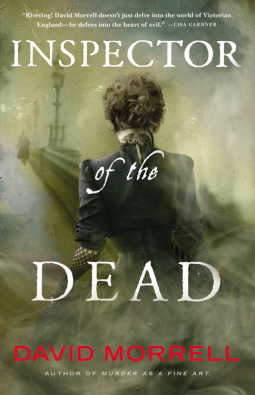
Inspector of the Dead
by David Morrell
This title was previously available on NetGalley and is now archived.
Send NetGalley books directly to your Kindle or Kindle app
1
To read on a Kindle or Kindle app, please add kindle@netgalley.com as an approved email address to receive files in your Amazon account. Click here for step-by-step instructions.
2
Also find your Kindle email address within your Amazon account, and enter it here.
Pub Date Mar 24 2015 | Archive Date Dec 07 2016
Description
The year is 1855. The Crimean War is raging. The incompetence of British commanders causes the fall of the English government. The Empire teeters. Amid this crisis comes opium-eater Thomas De Quincey, one of the most notorious and brilliant personalities of Victorian England. Along with his irrepressible daughter, Emily, and their Scotland Yard companions, Ryan and Becker, De Quincey finds himself confronted by an adversary who threatens the heart of the nation.
This killer targets members of the upper echelons of British society, leaving with each corpse the name of someone who previously attempted to kill Queen Victoria. The evidence indicates that the ultimate victim will be Victoria herself.
A Note From the Publisher
The sequel to the New York Times bestselling Murder as a Fine Art.
Advance Praise
“Fans of sophisticated historicals will embrace Macavity Award-winner Morrell’s second suspense novel featuring Thomas De Quincey and his grown daughter, Emily. . . . Convincing period detail complements the fascinating story line.” —Publishers Weekly (starred)
“Ripping good fun at every delicious twist and turn . . . De Quincey makes for an offbeat but entirely credible protagonist in the Sherlock Holmes mold. . . . It’s a potent formula, with genuine thrills and a satisfying mystery leavened with well-observed and meticulously researched details of Victorian life and attitudes.” —Kirkus Reviews
“Delivers a cast of compellingly crafted characters. De Quincey, in particular, is a brilliant creation, an amateur sleuth, writer, and drug addict who both repels and intrigues us at the same time. Top-notch entertainment.” —Booklist
“From the shockingly brutal murders at the start to the stunning conclusion, De Quincey and his fellow investigators race against time to discover who is killing prominent Londoners as a prelude to assassinating Queen Victoria. . . . Appeals [to] fans of historical fiction and Victorian-era crime novels as well as readers who enjoy Anne Perry or Robin Paige.” —Library Journal
“Riveting! I literally thought I was in 1855 London. With this mesmerizing series, David Morrell doesn’t just delve into the world of Victorian England—he delves into the heart of evil, pitting one man’s opium-skewed brilliance against a society where appearances are everything . . . and the most vicious killers lurk closer than anyone thinks.” —Lisa Gardner, author of Crash & Burn and The Perfect Husband
Available Editions
| EDITION | Other Format |
| ISBN | 9780316323932 |
| PRICE | $26.00 (USD) |
Links
Average rating from 32 members
Featured Reviews
Many thanks to NetGalley for providing this ARC for review.
The year is 1855. The Crimean War is raging. The incompetence of British commanders causes the fall of the English government. The Empire teeters. Amid this crisis comes opium-eater Thomas De Quincey, one of the most notorious and brilliant personalities of Victorian England. Along with his irrepressible daughter, Emily, and their Scotland Yard companions, Ryan and Becker, De Quincey finds himself confronted by an adversary who threatens the heart of the nation.
This killer targets members of the upper echelons of British society, leaving with each corpse the name of someone who previously attempted to kill Queen Victoria. The evidence indicates that the ultimate victim will be Victoria herself.
Once again author David Morrell has produced a winner. INSPECTOR OF THE DEAD has the wonderfully grim De Quincey as a main character, wintry Victorian England as a backdrop, and a plot full of double and triple crosses that will delight and confound the reader.
I’ll admit, this book started off slow. Truly slow. Morrell’s writing style took a bit to get used to–but as I progressed I noticed his sly use of sarcasm in the dialogue, the fatalistic attitude of De Quincey (which endeared me to the character quickly; no overly macho man here), and the on-point description of gaslight England, down to the terrors lurking in the Seven Dials district.
More on the style of writing: Morrell uses the third party omniscient narrator for the bulk of the book–but includes a first person narrative under the guise of De Quincey’s daughter Emily’s journal. There are also flashbacks contributing to the unsettling way the story is told. As you get drawn into the plot, it gets easier to roll with the narration switches and flashbacks.
The plot is taken from true events and embellished. Wherever he goes, De Quincey is simultaneously self deprecating and larger than life, openly drinking from his omnipresent laudanum bottle and quoting Emmanuel Kant. Emily keeps him quietly in check most of the time, but there are instances where the Opium-Eater runs off at the mouth, confounding his audience. Some of the best dialogue came from De Quincey’s talks with Lord Palmerston, the British statesman who becomes Prime Minister. Morrell also captures the class differences quite well, contrasting the stiff upper lips of Mayfair with the street urchins of the London slums.
INSPECTOR OF THE DEAD was such a joy, it made me want to read the first De Quincey book, MURDER AS A FINE ART. When I finally get to it, I’m sure I’ll be delighted.
 Librarian 137564
Librarian 137564
Holy crap, I'm ordering Morrell's entire back catalog for my library. This guy is excellent!
 Daniel R, Reviewer
Daniel R, Reviewer
Legendary thriller writer David Morrell, creator of Rambo, returns to Victorian England with INSPECTOR OF THE DEAD, a sequel to his 2013 novel MURDER AS A FINE ART.
MURDER AS A FINE ART told a fictional tale about a real man, Thomas De Quincey, a writer who scandalized London society with his memoir, CONFESSIONS OF AN ENGLISH OPIUM-EATER, which detailed his struggle with drug addiction. De Quincey was, by all accounts, a fascinating figure, and Morrell took superb advantage of De Quincey's intellect and intuition by throwing him into the middle of a series of gruesome killings, recreations of the infamous Ratcliffe Highway murders, which De Quincey had written about in real life, in an three-part essay entitled ON MURDER CONSIDERED AS ONE OF THE FINE ARTS. Accompanied by his devoted daughter, Emily, and aided by Scotland Yard's Inspector Sean Ryan and Constable Joseph Becker, De Quincey eventually exposed the murderer, and restored calm to a panic-stricken London.
INSPECTOR OF THE DEAD picks up a few weeks after we last saw De Quincey and company. He and Emily are about to be cast of of the home of Lord Palmerston, who has been putting the virtually homeless pair up since they arrived in London. Ryan is recovering from his wounds, and Becker has been promoted to Detective Sergeant. Morrell starts the book off with a mind-bending variation on the classic locked-room murder: After a fascinating exploration of how London's elite attended church, an elderly woman is murdered, her throat slit so brutally that she is almost decapitated, right in the middle of a packed mass at St. James's Church, a note found on her corpse bearing the name Edward Oxford printed on black stationary customarily used by mourning family members.
Edward Oxford was the man behind an unsuccessful attempt on Queen Victoria's life several years earlier, and as the body count rises, other notes are found bearing the names of different would-be royal assassins. As more and more members of government and law-enforcement are murdered, the clues all seem to point towards one final, ultimate victim: Queen Victoria herself.
Despite his reputation as a master of the modern thriller, Morrell has never seemed more at home than he does here, on the foggy, gaslit streets on 1850's London. As detailed in his afterword, the amount of research he put into these two books is staggering, and it shows on every page. In addition to being a great whodunnit, these books also serve a wonderful miniature history lessons. I spent quite a bit of time googling the various locations and situations that Morrell uses in the book. I've read a lot of books set in the Victorian Era, but none of them seemed even remotely as real to me as Morrell's work.
As in the previous novel, De Quincey shines every time he appears, and his relationship with his devoted daughter Emily is absolutely delightful. Unfortunately, our cast gets less time in the spotlight this time out, as they are joined by several new characters, including Sir Anthony Trask, a returning hero of The Crimean War, and Queen Victoria and Prince Albert, who have quite a strong onscreen presence in this book.
Morrell has delivered a sequel that is as good as, if not better, than the original. I don't know how long he intends to remain in Thomas De Quincey's world, but I'll be aboard for the duration. A phenomenal book, highly recommended.
Mulholland Books provided a review copy.
 Kristin C, Media/Journalist
Kristin C, Media/Journalist
In which we find our heroes, Thomas De Quincey, his daughter Emily, and Scotland Yard Detectives Ryan and Becker at the center of a murder mystery leading back to Queen Victoria herself. It’s been about 7 weeks since the events of Murder as a Fine Art concluded and De Quincey and Emily have been staying at Lord Palmerston’s estate, much to his chagrin, and he’s ecstatic that the time for them to finally leave has come. Unfortunately, murder is afoot again, and De Quincey’s help is invaluable to Becker and Ryan. Poor Lord Palmerston. In 1855, when this book takes place, the Crimean War is in full swing, and the English government has fallen, partly due to the reporting of William Russell, a journalist for The Times covering the war (considered to be one of the first modern war correspondents), and evidence of the gross incompetence of British troops.
The first murder they must investigate is the gruesome killing of Lady Cosgrove at St. James Church. She seems to come into the church of her own volition, in mourning clothes, and escorted by an unidentified man, then she is discovered in her private pew with her throat slit. It’s a daring murder, one that taunts the detectives, but really, the killer is just getting started, and his targets seem to be members of the peerage and their households. Pressure is high to catch this killer, but he seems to be everywhere at once, inciting panic among the populace , and is also leaving notes with each murder, containing a different name each time and also the words Young London.
Murder as a Fine Art was fantastic, and Inspector of the Dead is even better. He revisits the formula he used in the first book, and it’s a good one. We not only follow the investigation with De Quincey and Co., but we also follow the killer as he goes about his dark business. You won’t know who he is to begin with, but when the reveal comes, it’s a shocking, and also heartbreaking one. I consider myself a fairly jaded reader, but this one had me fooled all the way to the reveal. Morrell is darkly inventive with the murders and cleverly mines very real history to aid our villain in his killing spree, yet manages to take a monstrous man doing monstrous deeds and dig deeply into just how he became that monster, especially shining a stark light on how the poor were treated in 1850s London. The stories of young beggars, penny divers, and chimney sweeps aren’t unknown things, but it doesn’t make them any less shocking. The very fact that this kind of treatment of human beings existed at all is shocking.
Thomas de Quincey by Sir John Watson-Gordon.
Thomas de Quincey by Sir John Watson-Gordon.
It’s not all blood and gore, however, and lest you think this is the “men of Victorian England show”, Emily De Quincey is a star all on her own. She’s utterly devoted to her father, loves him because of his brilliance and quick mind, and in spite of his laudanum addiction, seen by others as a weakness, but Emily isn’t so sure of that. She’s convinced that it’s a physical dependency, but of course, at that time, things like drug dependency and alcoholism were not seen as physical problems, but problems of a weak will or constitution. Interspersed throughout the novel are entries from Emily’s diary, and they’re some of the best parts of the book. As dark as things get, I laughed out loud at portions of the diary, specifically during a dinner scene with Queen Victoria and Prince Albert, in which Emily is sure that her father’s outbursts will get them thrown out, and her hungry belly drives her to create any sort of distraction that she can. It’s very clever, and very funny, and a bit of a reprieve from the darkness at the heart of the main story.
Essayist and author Thomas De Quincey and his daughter Emily were real people, as were many other characters that populate this superior thriller, which, to me, makes the book that much more fascinating. The author brings each character back to life, and they spring fully formed from the page, each with their own hopes and dreams, and of course, nightmares and burdens. This is not only a fantastic historical thriller, but it’s also a finely drawn portrait of England (and the very wide rift between the classes) in the 1850s, and you’ll feel like you’re there, in the thick of it, with De Quincey, Emily, Becker, and Ryan. The author discusses many of the very real events and people he utilizes in the novel in an afterword that’s fascinating on its own. He also discusses his use of third person omniscient in the novel, which is rarely used in modern literature, but was a staple of Victorian novels. This book is a gem, and it’s no surprise that David Morrell is its creator. I first discovered The League of Night and Fog as a teenager, and I’ve been a devotee of his since. His mastery of the historical is not a surprise, but it is a delight, and I dare you to put this down once you’ve picked it up.
When I found out there would be another book in this series featuring the Opium Eater Thomas De Quincey, his brilliant and beautiful daughter Emily, and their Scotland Yard buddies Ryan and Becker. Inspector of the Dead begins with the death of a prominent woman in a very public place named Lady Cosgrove. She is found with a note in the her pocket that reads "Young England". This group is known for being against the monarch hoping to someday overthrow the government.
As the investigation progresses, there are more attacks and deaths on prominent persons in London with notes left on them naming others who have attempted to assassinate the queen. Being a genius on the subject of murder as a fine art, De Quincey was able to deduce that the Queen may be the true target of all these murders.
De Quincey and crew investigate past attempts as well as possible suspects. We learn through their travels just how rudimentary the legal system was at that time. It's people such as Becker and Ryan who suggested incorporating the many things I'm sure are taken for granted. Such as taking pictures of the crime scene or at least preserving the scene. And gratefully Morrell doesn't allow this novel to move at a pace that makes you feel every inconvenience of being set in Victorian England. I barely noticed that it would have been helpful to have a cell phone in order to tell the Queen to hide.
Morrell kept me glued to this novel and I enjoyed it just as much as Murder As a Fine Art. The idea that not much has changed in regards to human nature to wear disguises to often times be who we aren't or to make the appearance of being more important than we are. Even De Quincey admits he's fallen victim to being a person who knows that his name bares more weight in certain circles. That is why he added the "De" before Quincey. The suspect in this novel uses disguises to work his way into a society he didn't belong. And he's pretty smart I tell ya. I really dig this guy.
One other thing worth mentioning is that I really enjoy getting into the characters heads. Emily's diary entries provide a lot more depth into her character and the relationship she has with the two inspectors Ryan and Becker. We also get to peer into the mind of the killer in an effort to understand what he's thinking and why he's doing what he's doing. The only characters who take a backseat in this title are Becker and Ryan. I would have liked more from them but... they aren't the stars. Thomas De Quincey is. He's a character based on a real man so it's interesting that Morrell has given him such depth and allows him to be likable instead of stagnant.
Overall, I'm a bonafide fan of this Thomas De Quincey series. Inspector of the Dead is fast paced, absorbing, and just a good ol' fun read. Traipsing around the dark and murky corners of Victorian England is always a good time. I hope David Morrell graces us with more installations to this De Quincey series. He is one of my favorite authors so even if there is never another Opium eater, I will definitely be reading more. Inspector of the Dead encourages me to see past the disguise and realize people are more than they appear to be.
 Lynn W, Reviewer
Lynn W, Reviewer
https://lynnsbooks.wordpress.com/2015/03/09/inspector-of-the-dead-by-david-morrell/
Just finished reading Inspector of the Dead. I did get off to a bit of shaky start with this before I managed to get fully immersed but then it did hold my attention most successfully.
Set during the reign of Queen Victoria Inspector of the Dead is a crime/mystery story with a protagonist consumed with the desire for vengeance. The story is set during the Crimean War with many of the events, dates and places being based on real events.
The story gets off to a pretty immediate start with the death of a lady from the upper echelons of polite society – murdered in cold blood and apparently in full view of everyone attending Church! From there onwards the murder of society’s most prominent figures seems to spiral upwards and each death seems to deliver a grim message.
I’m not clear as to why this was a slow starter for me – it certainly wasn’t due to the lack of action or pacing. Maybe there was just too much going on and the police and others seemed to be running around like headless chickens – on reflection I think that was a very cunning ploy by the author to instil in the reader the same feelings of chaos and mayhem that the murderer was instilling in the people of London. At the time though I confess I was getting slightly irritated for some inexplicable reason.
Anyway, clearly I got over the feeling, as one minute I was considering not reading and the next I found myself nicely on the hook and turning the pages pdq.
As I mentioned above the main thrust of the story revolves around the desire for revenge. The victims start to deliver a picture of intent and it isn’t long before it becomes clear to those in authority that the Queen will be the final target.
Apparently this is the second book in the Thomas DeQuincey series – I haven’t read the first but I don’t think this was detrimental at all as the author has a pleasing style and the characters and place are easily conjured and each book is self contained.
The main character of course is DeQuincey. DeQuincey was notorious during the Victorian era – not only for writing a number of successful and revealing books but also for his prolific consumption of opium – for which he became known as ‘the opium eater’. Whether this habit gives him an increased clarity of mind or whether it simply increases his imagination is debatable by society but nobody can deny that he has a knack for looking at things in a logical fashion and cutting to the heart of the matter. The other characters are DeQ’s daughter Emily and two of Scotland Yard’s finest in Ryan and Becker. There are other characters on the outskirts but these are the main focus – along with the killer of course.
I can see that this would be an enjoyable series to read, just to read a standalone in a series is never as satisfying as reading from the beginning and picking up important details about the character and watch them develop and expand as you read is part of the enjoyment of a series. In that respect I would definitely continue with DeQuincey to see what comes next. I liked Emily – she knows her own mind and she’s not afraid to follow her own instincts even if that singles her out from the norm.
This book has a good pace, there are plenty of random little facts thrown in for good measure and a good build up of tension.
In terms of criticisms – well, I think it misses a trick in terms of using the Victorian era to better effect. It’s one of those periods in time that can have such a dark and creepy feel, Slums, dark alleys, pea soup fog, footsteps echoing behind a person – I didn’t quite get the spook factor that I would have liked in that respect although there was one particular scene where the murderer has literally closeted himself inside somebody’s house which was a bit chilling to say the least and definitely shone the spotlight on the murderer in all his incandescent rage! I was practically shouting at the book ‘run, get out’, ‘fly you fools’!!
All in all, after not the best start, I enjoyed this. It had that wonderful, over the top detective type feel that you would probably enjoy if reading a Sherlock Holmes story – where the baddies are just delightfully ‘bad’ and seem to be able to accomplish anything. Plus, I hand it to DM – i didn’t figure out the identify of the murderer – well, until about two seconds before the author decided to reveal it!
If you fancy a good murder/detective story with a crazy madman bent on destruction then I would recommend this.
I received a copy of this through the publishers courtesy of Netgalley for which my thanks. The above is my own opinion.
All reviews appear on Amazon, Goodreads, LibraryThing plus LT Facebook and Twitter, eyes.2c review blog
Amazon http://www.amazon.com/Inspector-Dead-David-Morrell-ebook/dp/B00LLIIZC0/ref=cm_cr-mr-title (Mar. 24, 2015)
LibaryThing and LibraryThing Facebook and Twitter http://www.librarything.com/work/15173898/summary/117181273 (Mar. 24, 2015)
Goodreads https://www.goodreads.com/review/show/1228250422 (Mar. 24, 2015)
eyes.2c reviews blog http://eyes2creviews.blogspot.ca/2015/03/darkly-fascinating.html (Mar. 24, 2015)
Darkly fascinating!
1855 London at the time of Victoria and the Crimean War. The government has just been brought down over military bungles in the Crimea. Everything is in flux. And a series of murders are about to be committed. Particularly fiendish, bizarrely clever and repugnant murders are being committed amongst the upper class and civic leaders. Each death leads back to someone or some persons who have attempted to assassinate Queen Victoria. It seems the Queen herself is targeted. Londoners are in a panic. As the raison d'être for the murders unfolds it makes sense in a tortured way. There is a balance between the horror and the understanding of how the mind can break and evolve into a different truth. De Quincy, the opium-eater, Emily and the Scotland Yard detectives Sean and Ryan are on hand to witness the first death. They are attending a church service at St James Church . They present a wonderful and scandalous juxtaposition against the normal attendees, shocking many there by their very difference, their appearance and Emily's ever-so practical bloomers.
Well written to the point of bizarre, the tension in the story holds right to the end. I just had to keep reading. The major characters are wonderfully crafted. Emily, Thomas, the detectives, the upright and brave Colonel Trask, Lord Palmerston, Queen Victoria and Prince Albert. I did enjoy Emily's foray into arsenic and old lace, or rather arsenic and clothing dyes and food colourings.
Thomas De Quincy and his daughter Emily are an excitingly different pair of characters. Reading 'A Review by Katherine Neville' on Murder as a Fine Art on Amazon helped to flesh out Thomas DeQuincy. It is a valuable background read. I highly recommend it. As I hadn't read any previous novels in the series This review helped me to read Inspector of the Dead with a more informed background. I also enjoyed Morrell's end notes about his meticulous research, his walks through London places at all hours and weather to understand the times, the places and the shadows. Incredible!
A NetGalley ARC
Readers who liked this book also liked:
L.M. Montgomery, Crystal S. Chan, Kuma Chan
Children's Fiction, Comics, Graphic Novels, Manga, Teens & YA


